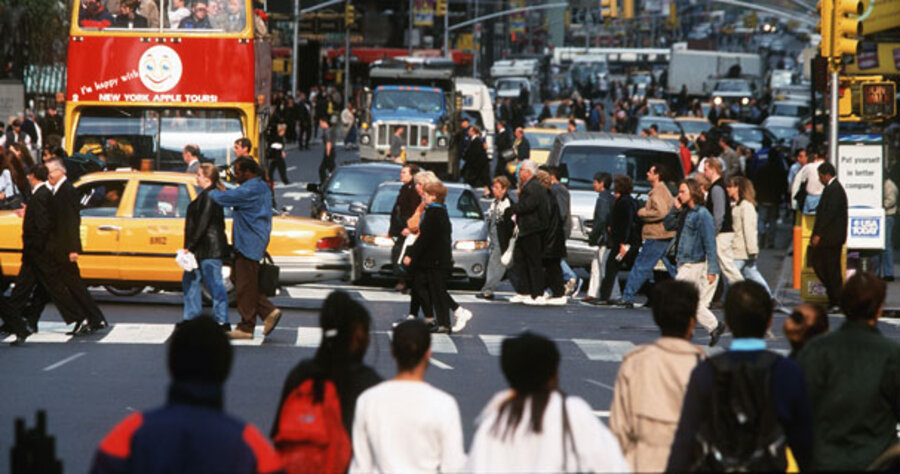Why don't we do it in the road?
Loading...
The New York Times ran a provocative story yesterday on redefining the street. Writer Jeff Byles interviewed a number of urban planners who want to diminish the dominance of cars transform the streets into pedestrian-and-bike-friendly public plazas.
"For decades, the Department of Transportation's job has been to move vehicles as quickly as possible," said Janette Sadik-Khan, the agency's commissioner. "We're taking a look at it a little bit differently now. There is a tremendous hunger for what we can do to make it easier for people to get around, to improve the quality of our streets and plazas, to make it easier for people to linger."
These street reformers – planners, architects and urban officials from around the globe – are questioning the conventional street-curb-sidewalk motif, challenging the dominance of cars, and devising ways to use street furniture, plants and even radical new vehicles to transform the experience of the street.
Byles then goes on to describe ten different ways in which the streets can be reworked to tame traffic. Some of these proposals already exist in some places, such as the fun-to-say woonerf, an anarchic Dutch street design that eliminates all traffic signals but gives pedestrians priority, and the separated bike lane, already in place in some parts of Manhattan, which frees cyclists from having to compete with cars for space on the road. Other ideas are more out there, such as Mitchell Joachim's vision of AI-equipped squishy cars.
The story came the day before Michael Bloomberg's much-touted congestion pricing plan imploded in the state legislature. The New York mayor's failure to get Albany on board with his plan will mean that Mr. Bloomberg, if he really wants to reduce city traffic, will be seeking alternatives that don't require approval from the state. I woonerf he has any ideas.
This is important stuff when it comes to climate change, as the car accounts for about half of the typical household's carbon emissions. Making cars more fuel-efficient is part of the solution, but we will also need to make our communities more walkable. In the United States, where far too many people can't walk to their local supermarket without crossing an interstate, redefining our roads will prove difficult. Especially since, as the Times pointed out last week, no matter how difficult you make it, some people just like driving.





